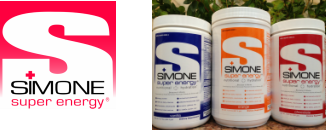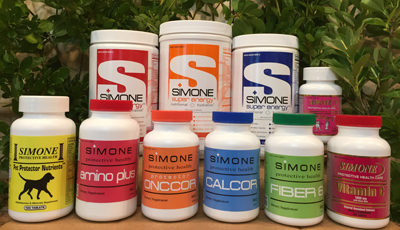ONE OF AMERICA’S RICHEST FAMILIES, THE SACKLERS, INITIATED AND PROMOTES OPIOID CRISIS: HOW TO STOP THE OPIOID CRISIS
by Dr Simone | Nov 15, 2017 | Big Pharma, FDA, Opioid Crisis |
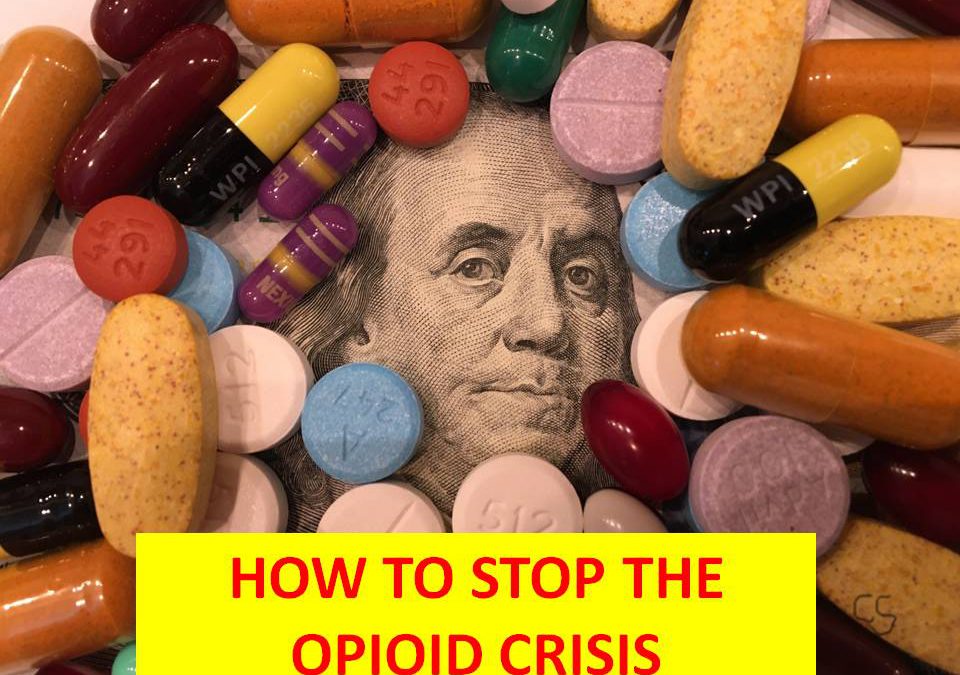
November 15, 2017 – Updated May 30, 2023
We do not diagnose disease or recommend a dietary supplement for the treatment of disease. You should share this information with your physician who can determine what nutrition, disease and injury treatment regimen is best for you. You can search this site or the web for topics of interest that I may have written (use Dr Simone and topic).
“We provide truthful information without emotion or influence from the medical establishment, pharmaceutical industry, national organizations, special interest groups or government agencies.” Charles B Simone, M.MS., M.D.
ONE OF AMERICA’S RICHEST FAMILIES, THE SACKLERS, INITIATED AND PROMOTES OPIOID CRISIS: HOW TO STOP THE OPIOID CRISIS
************************************************
SUMMARY RECOMMENDATIONS OF CHARLES B. SIMONE, M.MS, M.D.
Through their privately held pharmaceutical company, Purdue Pharma, the Sacklers chose to manufacture and market a highly addictive drug, OxyContin, and made billions of dollars from it.
1) Repeal the Ensuring Patient Access and Effective Drug Enforcement Act that Big Pharma paid for to weaken aggressive DEA enforcement efforts against drug distribution companies (including AmerisourceBergen, Cardinal Health, and McKesson) that were supplying corrupt doctors and pharmacists who peddled narcotics to the black market. Big Pharma worked with lobbyists and key members of Congress, pouring more than a million dollars into their election campaigns, including $100,000 to chief advocate of the Act, Representative Tom Marino (R-PA). Marino spent years trying to move the law through Congress. It passed after Senator Orrin G. Hatch (R-Utah) negotiated a final version with the DEA. It sailed through Congress without debate and was passed by unanimous consent. Obama signed it into law
2) Find a way to hold legally accountable all those involved: Big Pharma, Sackler family (all generations that benefit), all institutions that received money from Sacklers and/or opioid manufacturers, all elected officials who initiated and all who signed Ensuring Patient Access and Effective Drug Enforcement Act, key distributors that have already been fined (AmerisourceBergen, Cardinal Health, McKesson), all those who were paid (listed below), FDA officials involved, involved physicians and pill mills, etc.
3) Organize an Opioid Master Settlement Agreement, similar to the Tobacco Master Settlement Agreement of 1998. Treatment of babies and adults will cost scores of billions of dollars and more also for prevention and education programs. Lawsuits against manufacturers and distributors have been filed – see below.
4)Stop Big Pharma Direct-to-Consumer Advertising. Americans use about 30% of the world’s prescription opioids. This is no accident. It is a deliberate consequence of Big Pharma. Big Pharma can directly advertise to consumers only here in the United States and in New Zealand. This powerful marketing forces an American to expect greater relief of pain or relief of other conditions compared to those in other countries.
5) Stop Big Pharma from influencing and teaching physicians, including training manuals about opioids.
6) Stop all physicians with conflicts of interests from being on medical journal editorial boards, FDA, guideline committees, and organizations or publications that advocate for specific drugs. Americans who have died from opioids acquired those drugs from physicians.
7) Remove the Sackler name from organizations and have those organizations transfer all those dollars to the Opioid Master Settlement Agreement. Let’s see if all the Ivy League schools, museums, hospitals, endowed chairs, etc. comply. Don’t hold your breath.
8) Stop any federal government employee (FDA, DEA, FTC, etc) from ever working for Big Pharma or its distributors in ANY capacity. Stop ANY complicit activity of a federal employee with Big Pharma.
By the way, some of the print media has carried this information. But have you heard about it from television/cable broadcast media? Big Pharma advertising dollars influence what factual information the media will disclose.
************************************************
HOW TO STOP THE OPIOID CRISIS
Lawrenceville, NJ (Dr Charles B Simone) – Each day 145 Americans die from opioid overdose and hundreds of thousands have died since 1999. In 2013 the total economic burden that you, the taxpayer paid for opioid use was $80 billion: health costs + criminal justice costs + loss of work.
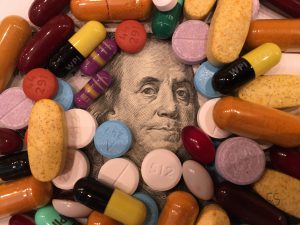
Arthur, Mortimer, and Raymond Sackler, brothers, were born in Brooklyn, all became physicians working in psychiatry, and thus learned how to influence human behavior. New physicians take the Hippocratic Oath and swear among other things: DO NO HARM.
Through their privately held pharmaceutical company, Purdue Pharma, they chose to manufacture and market a highly addictive drug, OxyContin, and made billions of dollars from it. OxyContin is a cousin to heroin that is twice as powerful as morphine. The Sacklers targeted cancer patients and patients with much less pain from many other medical illnesses. They manufactured pills with large doses that caused quick addiction and the need for more between the prescribed doses.
The Sacklers made sure that their name was not associated with OxyContin or with Purdue Pharma. But they made sure to promote themselves by attaching and weaving the Sackler name into the most highly recognized institutions evoking immediate respect and awe: the Sackler Gallery in Washington; the Sackler Museum at Harvard; the Sackler Center for Arts Education at the Guggenheim; the Sackler Wing at the Louvre; and Sackler institutes at Yale, Cornell, Columbia, Tufts, McGill, Edinburgh, Glasgow, Sussex, King’s College London, hospitals and more; endowed professorships and medical research. The Sackler family rarely comments on the source of their money and Purdue’s web site hardly mentions the Sackler name and omits family members who are on the Board of Directors.
In the early 1950s, Pfizer hired a public relations firm, William Douglas McAdams, led by Dr Arthur Sackler to help revolutionize drug marketing. Sackler conducted this marketing of Terramycin (antibiotic) like a military campaign using language of combat.
Dr Arthur Sackler bought an advertising agency and wrote ads for medications. He realized that doctors were unimpeachable in the eyes of the public and “easy prey” whose behavior could be easily swayed by his marketing. So he paid them well to endorse his products and to cite studies paid for by pharmaceutical companies. He got rich initially by writing ads and marketing Valium for Roche encouraging physicians to prescribe it to patients with no psychiatric symptoms – more than $100 million in sales and patients became addicted.
Arthur Sackler started the Medical Tribune to gain direct access to more than 600,000 physicians. He also owned, MD Publications, that paid almost $300,000 to Henry Welch, the chief of the antibiotics division of the Food and Drug Administration, to promote certain drugs. That $300,000 converts to $867,000 in 2019 dollars.
The “Fifth Vital Sign” – Arthur Sackler, through his publications, foundations that he started, and physicians that he paid, made sure that a patient’s level of pain on a scale of 1 to 10 became part of the vital signs every time a patient is seen by any physician for any reason, and made sure that pain medications were strongly suggested and prescribed.
U.S. Senator Kefauver investigated the pharmaceutical industry in the 1960s and his staff noted, “The Sackler empire is a completely integrated operation in that it can devise a new drug in its drug development enterprise, have the drug clinically tested and secure favorable reports on the drug from the various hospitals with which they have connections, conceive the advertising approach and prepare the actual advertising copy with which to promote the drug, have the clinical articles as well as advertising copy published in their own medical journals, [and] prepare and plant articles in newspapers and magazines.”
Purdue Pharma developed MS Contin, a timed released morphine pill. Contin is short for Continuous. Then they developed a timed release formula of oxycodone, OxyContin, in doses higher than any other prescription pain killer. Knowing that OxyContin was highly addictive, they decided to misinform doctors of its addictive potential. Purdue did not do any studies about how addictive OxyContin was. The warning label that came with each prescription said, “Taking broken, chewed or crushed OxyContin tablets could lead to the rapid release and absorption of a potentially toxic dose.” This warning essentially informed patients that they could get a quick high if they crushed the pill into powder and then snorted it or injected it once it was put in liquid. Many became addicts quickly and needed more between doses. Babies became addicts from pregnant mothers.
Dr Curtis Wright of the Food and Drug Administration approved a package insert that said OxyContin was safer than rival painkillers because it had a patented delayed absorption mechanism that “reduce[s] the abuse liability.” He quit the FDA and was hired by Purdue 2 years later. Dr Kessler, then the Commissioner of the FDA, said he, Kessler, was not involved.
Dr. Richard Sackler, said at a party for the debut of OxyContin, “[there] will be a blizzard of prescriptions that will bury the competition.”
OxyContin became a block-buster within a few years raising concern about its risk for addiction and overdose. According to the State of Massachusetts lawsuit 2018-2019 the Sackler’s strategy was to divert the blame onto others, particularly the people who became addicted to opioids themselves. In an email in February 2001 he wrote, “We have to hammer on the abusers in every way possible. They are the culprits and the problem. They are reckless criminals.”
Purdue praised the expansive opioid industry for which they were largely responsible and started a secret project, Project Tango, in September 2014 to take advantage of the growing industry of addiction treatment. It involved Purdue executives and Dr. Kathe Sackler, a daughter of the company co-founder Dr. Mortimer Sackler and a defendant in the Massachusetts lawsuit. According to the complaint she participated in phone calls and told staff that the project required their “immediate attention.” The Purdue team wrote, “It is an attractive market. Large unmet need for vulnerable, underserved and stigmatized patient population suffering from substance abuse, dependence and addiction.”
The State of Massachusetts lawsuit states “the company, the Sackler family, and company executives misled prescribers and patients as they aimed to blanket the country with prescriptions for their addictive medications.” ‘The Sacklers have made unconscionable profit at the expense of the public’s health.’
Michael Rubens Bloomberg Relation with the Sackler family – taken from Wikipedia
During the opioid epidemic in the United States, Mortimer Sackler — son of a co-founder of the company, Purdue Pharma, and a member of its board, met with Bloomberg to “seek his help and guidance on the current issues we are facing”. Purdue’s head of communications, Josephine Martin, added “Any positive news or ability to get our side out is through Bloomberg. We have given them exclusives and they have treated us very well.” Bloomberg also advised Mortimer Sackler to consult Stu Loeser to help manage communications.[328][329]
PURDUE PAID:
1) Dr Russell Portenoy, the pain specialist of Memorial Sloan Kettering Cancer Hospital in New York, to say that opioids have few side effects and that concerns about addiction are a “medical myth.”
2) Dr Haddox to write a position statement that opioids should be used to treat pain. This became the position statement for the American Academy of Pain Medicine and the American Pain Society funded with millions of dollars by Purdue Pharma. These organizations insisted that pain be one of the vital signs that all doctors must ask and record during every patient visit using a scale of 1 to 10. This legitimized the use of opioids for all patients and not just those with cancer.
3) Doctors to speak about OxyContin’s safety with studies and literature produced by doctors who were paid or funded by Purdue.
4) Several thousand doctors to attend medical conferences and speak about the benefits of OxyContin.
5) 5,000 doctors to attend pain management seminars all expenses paid. Those who attended wrote OxyContin prescriptions twice as often compared to those who did not attend. Purdue also paid for 20,000 pain “education” programs.
6) Patients and pain specialists to make promotional videos about OxyContin that were sent to tens of thousands of doctors.
7) Sales representatives tens of millions of dollars in bonuses to minimize addiction risks.
8) Wholesalers to keep OxyContin off “prior authorization” lists.
9) Pharmacists refunds on their initial orders.
10) For free starter coupons for patients.
11) Medical journals millions in advertising fees.
12) Academics millions in grants
13) US Senators and Members of Congress on key committees – from Purdue and the Sacklers as well.
14) Rudy Giuliani to help settle an investigation into illegal marketing of Oxycontin in Florida and to meet with the then-administrator of the Drug Enforcement Administration to prevent federal inquiries into the companies practices.
15) Napp Pharmaceuticals, the family’s drug company in the United Kingdom, and Mundipharma, a Purdue owned company, to push OxyContin all over the world – Asia, Middle East, Latin America, etc, because by 2010 sales started to fall in the United States and by 2016 the US medical community suggested that OxyContin was the main cause of the opioid crisis. Mundipharma used the same playbook: the doctors who were paid by Purdue in the US were sent as “pain ambassadors” abroad to extoll the virtues of OxyContin.
Pill mills were shut down and hundreds of doctors were arrested. Purdue know of these doctors but did not let authorities know about them.
An entire generation of physicians were trained to readily prescribe opioids when patients complained about pain even though there are no data supporting the use of opioids for chronic pain.
CVS, the drugstore chain, accused of profiteering from opioids, said it would limit prescriptions to one week.
Many addicts start using heroin because prescription opioids were too expensive or too difficult to obtain.
In 2007 Purdue Pharma pleaded guilty to felony charges for criminally misbranding OxyContin and for lying to doctors that it was less addictive. Purdue paid $600 million in fines to the US Government. Purdue’s medical director, president, and general counsel pleaded guilty to misdemeanor charges and paid $34.5 million. No Sacklers were named in that suit and will probably not be named in any future lawsuit because an agreement stating that new criminal litigation can only address issues after 2007 – no Sackler was in an executive position since 2003.
In 2015 Richard Sackler was deposed by Kentucky’s Attorney General and that deposition is currently sealed. Lawsuits for damages from the opioid epidemic were filed by 25 government entities.
Because of negative publicity and knowing their patents were about to expire, Purdue made OxyContin harder to snort or inject and said no generic versions should be sold because it was so addictive. In April 2013, our “protective” FDA would not permit any generics of the original OxyContin thus giving Purdue more years to market.
BANKRUPTCY Proceedings (Sept 2019): Now that Purdue Pharma has been transferred to a “Public Trust” the bankruptcy judge has the ability to fully “pardon” all the members of the Sackler family and not hold them accountable for any crimes if the judge feels that the money from the company is enough to pay for the crime. The Sacklers own two other pharmaceutical companies that should be brought under this bankruptcy settlement. Otherwise they keep making money:
Napp Pharmaceuticals, the family’s drug company in the United Kingdom, and Mundipharma, a Purdue owned company, to push OxyContin all over the world – Asia, Middle East, Latin America, etc, because by 2010 sales started to fall in the United States and by 2016 the US medical community suggested that OxyContin was the main cause of the opioid crisis. Mundipharma used the same playbook: the doctors who were paid by Purdue in the US were sent as “pain ambassadors” abroad to extoll the virtues of OxyContin.
December 22, 2020 – The Justice Department sues Walmart charging that the company’s pharmacists filled prescriptions for controlled substances despite knowing these orders were invalid.
November 2020 – A plea agreement was entered for Purdue Pharma and the Sacklers.
Purdue admitted to “conducting a sustained, illegal campaign to increase unsafe and medically unnecessary opioid prescribing.” Punishment was: $3.5 billion criminal fine, $2.8 billion civil fine, $2 billion forfeiture. In exchange, the federal government agreed not to pursue any other criminal charges against the company for its actions between May 2007 and October 2020. But the company is in bankruptcy and therefore it is not known if any of the above fines will be paid.
The Sacklers made the decisions for the company but no Sackler family member was charged or admitted to any criminal wrongdoing even though the opioid crisis killed more than 500,000 people since 1999. And caused hundreds of thousands of addictions. The Sacklers agreed to pay a mere $225 million in civil penalties.
September 1, 2021 – U.S. Bankruptcy Court Judge Robert Drain dissolved Purdue Pharma and approved Purdue’s bankruptcy plan, giving the Sackler family immunity from future lawsuits and making some of them pay more than $4.3 billion to compensate people, local governments, and tribal communities harmed by the OxyContin painkiller. The Judge noted that the Sacklers’ approximately $11 billion may be out of reach. This does not include the possible billions that may be in private/secret accounts.
May 30, 2023 – BY PUTTING THE ONUS OF RESPONSIBILITY ON PURDUE PHARMA, The U.S. Court of Appeals for Second Circuit PROTECTS the rich SACKLER FAMILY FROM THOUSANDS OF LAWSUITS alleging they contributed to the opioid crisis. SOME SACKLERS WILL GIVE UP OWNERSHIP OF PURDUE.
PURDUE WILL BECOME A NEW COMPANY, KNOA. PROFITS ARE THOUGHT TO BE $5.5 BILLION AND $6 BILLION – TO BE USED FOR THE OPIOID CRISIS AND ITS SURVIVORS.
August 12, 2023 – THE PURDUE PHARMA SETTLEMENT THAT WOULD PROTECT THE SACKLER FAMILY IS TEMPORARILY BLOCKED BY THE SUPREME COURT.
Nearly half of all federal prisoners are in jail for a drug offense. But not the Sacklers. They got off easy. Because of money and power to buy the most expensive attorneys, lobbyists, contributions to political campaigns and influence, Big Pharma executives and owners can walk free. They were not held accountable and the American public will continue to say that money and power gets anyone off the hook.
WHAT PHILANTHROPY CAN BUY IS IMMORTALITY, RESPECT AND AWE, AND ERASES ANY EVIL ORIGINS OF MONEY. The president of Tufts University, Anthony Monaco, said of Raymond Sackler, the last of the three brothers: “It would be impossible to calculate how many lives you have saved, how many scientific fields you have redefined, and how many new physicians, scientists, mathematicians, and engineers are doing important work as a result of your entrepreneurial spirit. You are a world changer.”
SUMMARY Dr Simone’s Recommendations
HOW TO STOP THE OPIOID CRISIS
1) Repeal the Ensuring Patient Access and Effective Drug Enforcement Act that Big Pharma paid for to weaken aggressive DEA enforcement efforts against drug distribution companies (including AmerisourceBergen, Cardinal Health, and McKesson) that were supplying corrupt doctors and pharmacists who peddled narcotics to the black market. Big Pharma worked with lobbyists and key members of Congress, pouring more than a million dollars into their election campaigns, including $100,000 to chief advocate of the Act, Representative Tom Marino (R-PA). Marino spent years trying to move the law through Congress. It passed after Senator Orrin G. Hatch (R-Utah) negotiated a final version with the DEA. It sailed through Congress without debate and was passed by unanimous consent. Obama signed it into law
2) Find a way to hold legally accountable all those involved: Big Pharma, Sackler family (all generations that benefit), all institutions that received money from Sacklers and/or opioid manufacturers, all elected officials who initiated and all who signed Ensuring Patient Access and Effective Drug Enforcement Act, key distributors that have already been fined (AmerisourceBergen, Cardinal Health, McKesson), all those who were paid (listed above), FDA officials involved, involved physicians and pill mills, etc.
3) Organize an Opioid Master Settlement Agreement, similar to the Tobacco Master Settlement Agreement of 1998. Treatment of babies and adults will cost scores of billions of dollars and more also for prevention and education programs. Lawsuits against manufacturers and distributors have been filed – see below.
4) Stop Big Pharma Direct-to-Consumer Advertising. Americans use about 30% of the world’s prescription opioids. This is no accident. It is a deliberate consequence of Big Pharma. Big Pharma can directly advertise to consumers only here in the United States and in New Zealand. This powerful marketing forces an American to expect greater relief of pain or relief of other conditions compared to those in other countries.
5) Stop Big Pharma from influencing and teaching physicians, including training manuals about opioids.
6) Stop all physicians with conflicts of interests from being on medical journal editorial boards, FDA, guideline committees, and organizations or publications that advocate for specific drugs. Americans who have died from opioids acquired those drugs from physicians.
7) Remove the Sackler name from organizations and have those organizations transfer all those dollars to the Opioid Master Settlement Agreement. Let’s see if all the Ivy League schools, museums, hospitals, endowed chairs, etc. comply. Don’t hold your breath.
8) Stop any federal government employee (FDA, DEA, FTC, etc) from ever working for Big Pharma or its distributors in ANY capacity. Stop ANY complicit activity of a federal employee with Big Pharma.
By the way, some of the print media has carried this information. But have you heard about it from television/cable broadcast media? Big Pharma advertising dollars influence what factual information the media will disclose.
U.S. OPIOID CRISIS IN 1890 AND NOW
THE SAME PLAYBOOK
YEAR
|
1890
|
NOW
|
Primary Big Pharma Company
|
Bayer
|
Purdue Pharmaceuticals
|
Drug
|
Heroin to treat
morphine addiction
|
Oxycodone
|
Physicians Were/Are Paid to Promote Drugs
|
Yes
|
Yes
|
Medical journal used to promote drug
|
JAMA
Journal of the American Medical Association
|
NEJM
New England Journal of Medicine
|
Physicians wrote in journals to promote
|
“not a hypnotic” and “carried no danger of acquiring the habit”
|
“low potential for abuse and addiction” and “the development of [opioid] addiction is rare in medical patients with no history of addiction”
|
Regulators failed to protect the public
|
Yes
|
Yes
|
|
|
|
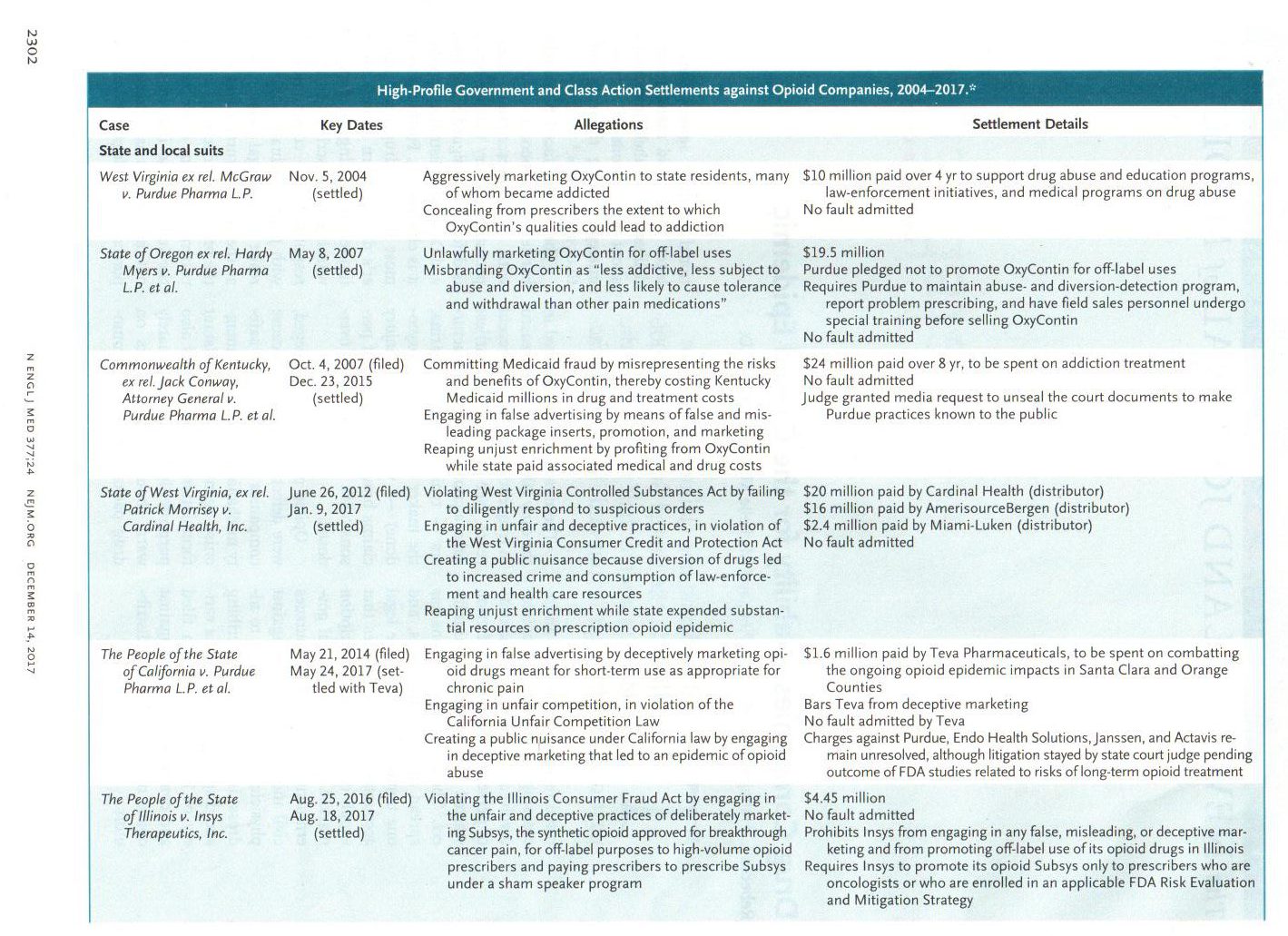
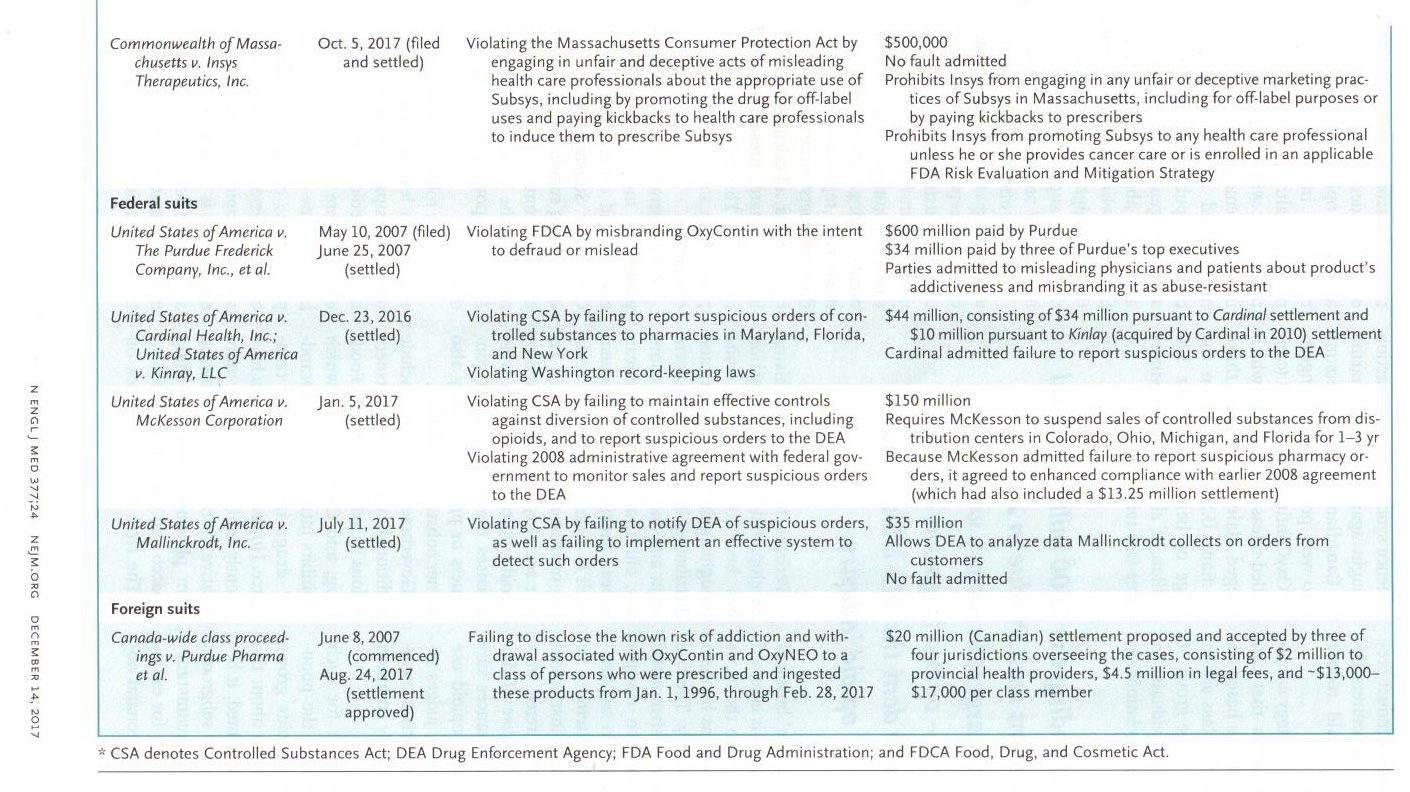
SOURCES
Van Zee A. The promotion and marketing of OxyContin: commercial triumph, public health tragedy. Am J Public Health 2009;99:221-227.
Psaty and Merrill. N Engl J Med 2017; 376:1502-1504April 20, 2017DOI: 10.1056/NEJMp1614972
Haffajee RL, J.D., Ph.D., M.P.H., and Mello MM, J.D., Ph.D. Drug companies’ liability for the opioid epidemic. N Engl J Med 2017; 377:2301-2305. December 14, 2017. DOI: 10.1056/NEJMp1710756
New Yorker Magazine; Esquire Magazine; Newsweek
(c) 2017 Charles B. Simone, M.MS., M.D.

